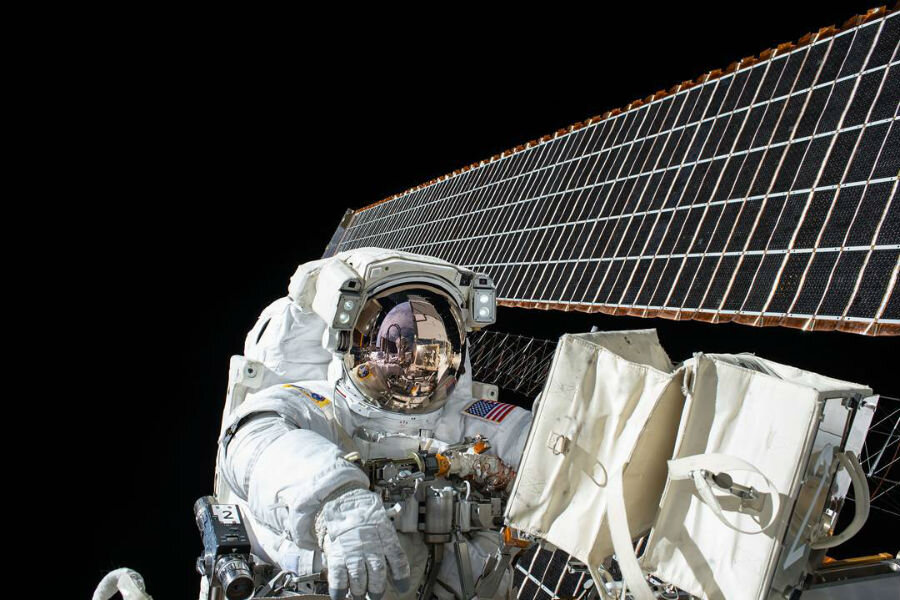How did astronauts spend Thanksgiving?
It turns out that Thanksgiving in space is much like it is here on earth, except that the feast and guests were floating.
American astronauts Scott Kelly and Kjell Lindgren working on the International Space Station (ISS), which is in orbit about 240 miles above Earth, took the day off Thursday to watch football and enjoy a feast of space food. Freeze dried and packed in plastic baggies, the meal may not have been Instagram-worthy, but it covered the Thanksgiving basics: candied yams, smoked turkey, corn, and potatoes au gratin.
In a video recorded on the ISS last week, Mr. Kelly and Dr. Lindgren talked about their plans for the holiday and some of the things for which they are grateful.
“Being on the space station here and looking down on our incredibly beautiful planet gives us a different perspective of what it means to be citizens of the world,” Kelly said into a microphone as he floated on the ISS.
He continued, “For me, being a middle class kid from New Jersey, to have the privilege to come up here and represent my country like this, this is what I’m thankful for.”
Kelly has been working since March on the space laboratory, where an international crew of six people from the United States, Russia, and Japan live and work as the lab travels at a speed of five miles per second, orbiting Earth every 90 minutes.
The space lab has hosted astronauts from 83 countries since November 2000, all doing research on Earth and space science, biology, human physiology, physical sciences, and technology to address the challenges explorers from Earth may face as they prepare to travel to Mars and beyond.
NASA is planning to send humans to Mars for this first time in the 2030s.
Kelly will be the first American to spend an uninterrupted year on the ISS, twice as long as typical US missions. Four Russian cosmonauts had already spent a year or more consecutively in space between 1987 and 1995, says NASA.
In a recent video interview from the space station, about 230 days into the astronaut’s mission, Kelly said that among the things he misses most from Earth is the ability to go outside.
“The weather, the sun on your face, the breeze, the things that earth has to offer in that regard,” he said.
His one-year mission, which will end in March 2016, is expected to provide insight into how humans can cope with long-term spaceflight. Kelly and his identical twin brother Mark, who is on earth, are participating in a series of experiments to test how long-term spaceflight affects the body, according to NASA. Researchers are also comparing the twins to see how spaceflight may impact perception, reasoning, decision making, and alertness.
“We realized this is a unique opportunity to perform a class of novel studies because we had one twin flying aboard the International Space Station and one twin on the ground,” said Craig Kundrot, deputy chief scientist of NASA’s Human Research Program in an announcement last year.
“We can study two individuals who have the same genetics, but are in different environments for one year,” he explained.
Now that the holiday is over, Kelly and Lindgren are preparing for next week’s delivery to the ISS of 7,000 pounds of research equipment and supplies. The unmanned space pod called Cygnus will launch from Earth on December 3 with its fourth delivery, due to arrive at the ISS on December 6.
When it arrives, Kelly and Lindgren will use a robotic arm to grab the pod in space and draw it to the station, where it will latch on for over a month.





